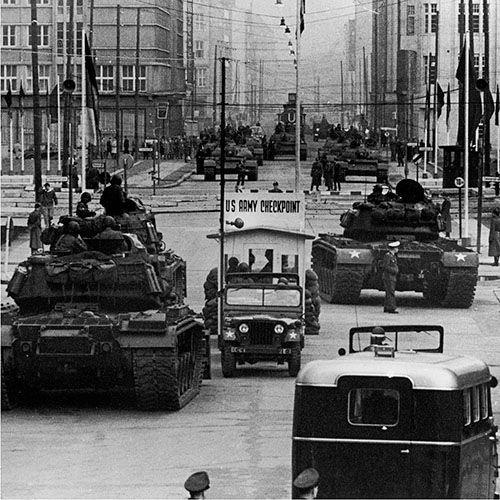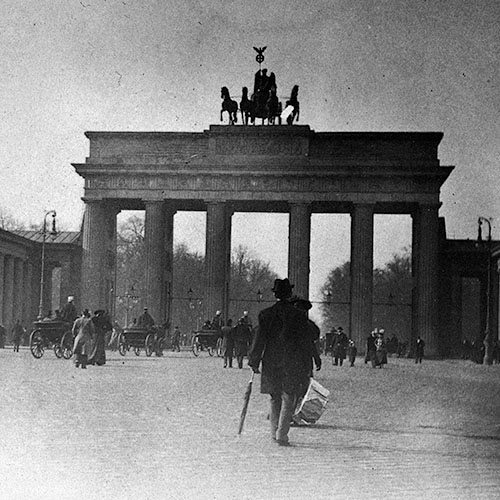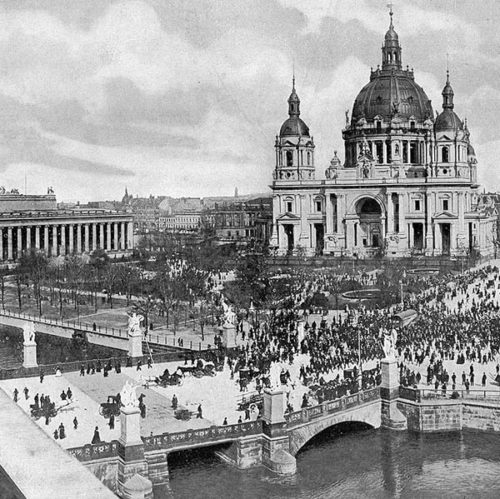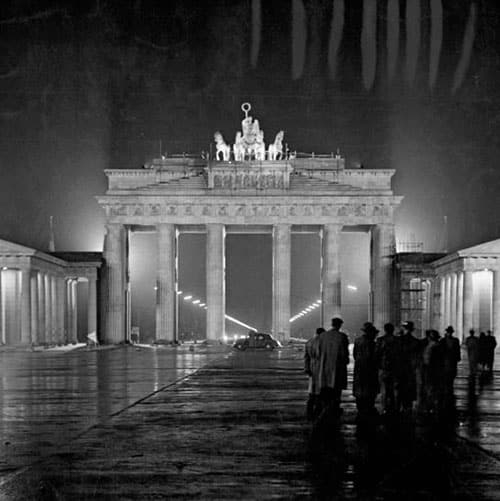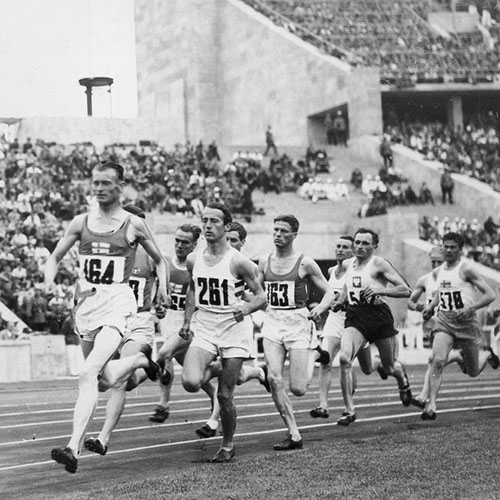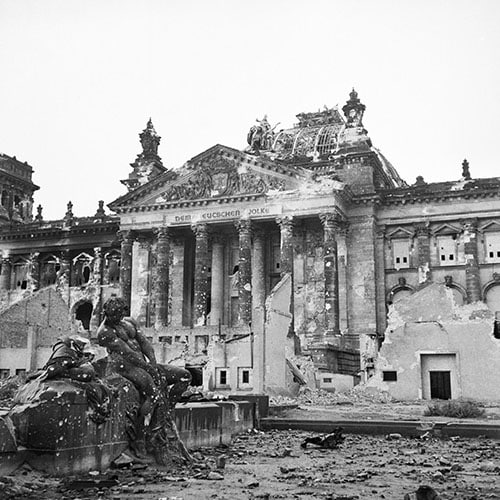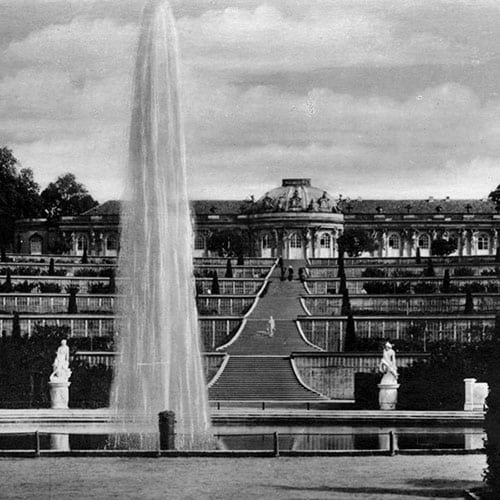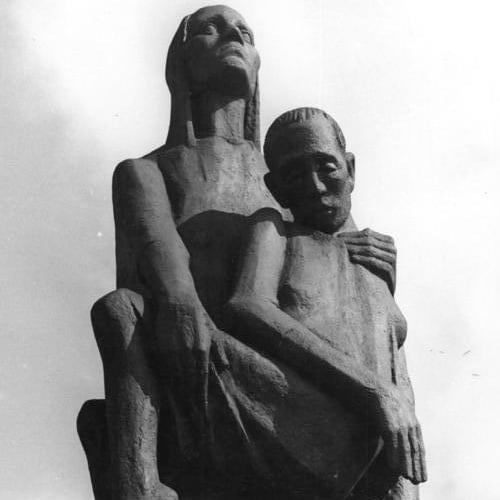“Of course my father belonged to the Nazi Party. But who didn’t belong back then? The whole industry worked for the Nazi Army.”
Hugo Boss’ son, Siegfried Boss, interviewed in 1997
The Third Reich was, among other things, a triumph of style over substance.
It was a regime obsessed with the visual, a dictatorship that understood that before you can conquer a continent, you must first conquer the eye.
The rallies at Nuremberg were not just political meetings; they were Wagnerian opera sets brought to life. The swastika was not just a political symbol; it was a branding masterstroke. And the uniforms…
In the grim theatre of the twentieth century, the black tunic of the SS stands out as a uniquely horrifying costume.
It was designed to intimidate, to separate the wearer from the common humanity of the street, and to project a cold, mechanical elitism. Because the uniform looks ‘designed’ – sharp, tailored, deliberate – modern observers crave a famous name to attach to it.
We want a villainous artist.
We want to believe that a fashion icon sold his soul to clothe the devil.
And so, the myth persists: that Hugo Boss designed the Nazi uniforms.
It is a factoid repeated at dinner parties and in comment sections across the globe. It fits our understanding of the banality of evil.
But when we peel back the layers of field-grey wool and look at the labels stitched inside, we find a story that is not about evil genius, but about something far more common and perhaps more disturbing: opportunistic survival, fanatical mediocrity, and the crushing machinery of the German state.
–
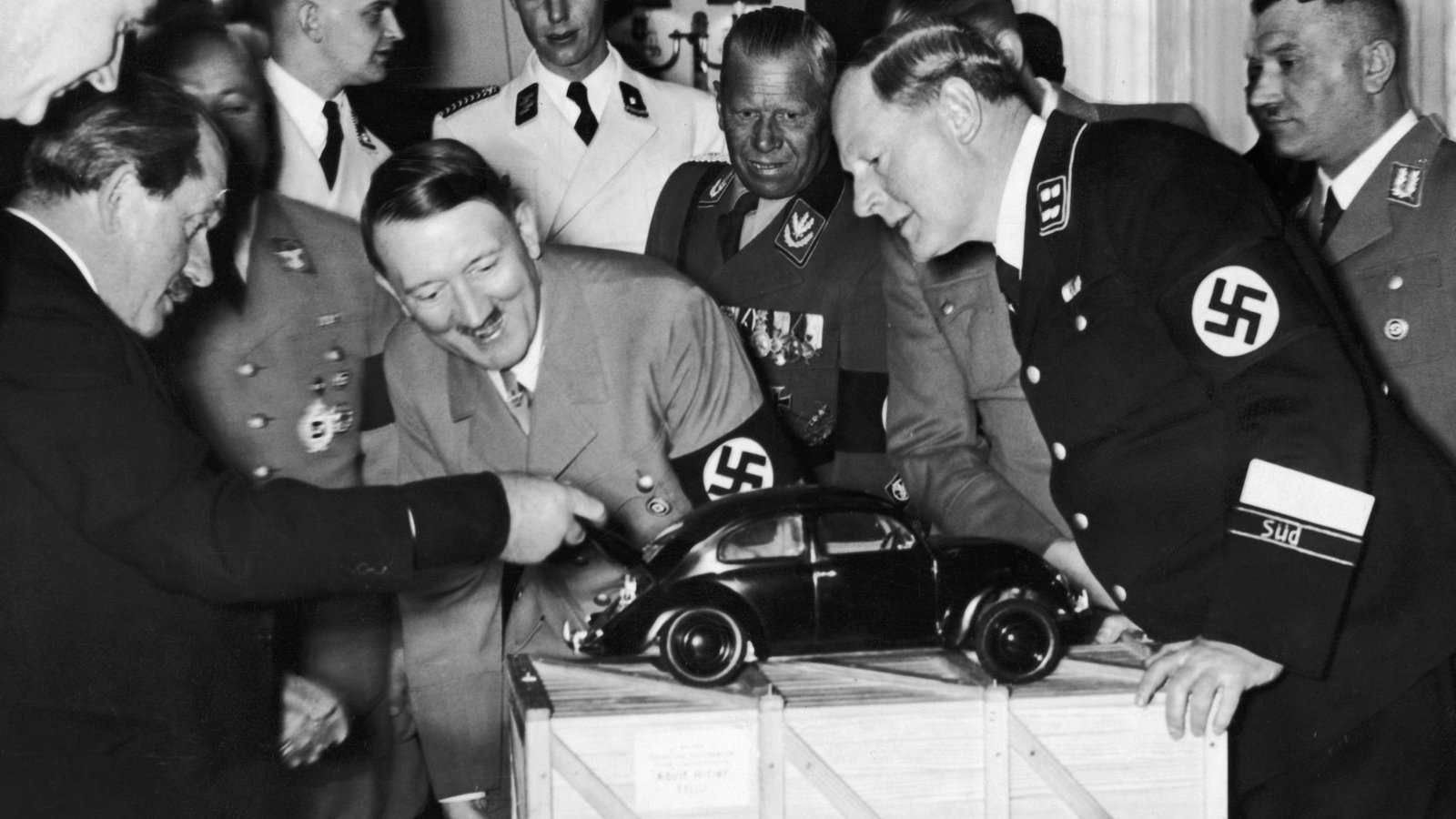
The Landscape of Complicity: German Industry and the Third Reich
“It was not a crime to make money in the Third Reich… but the pursuit of profit was always conditional on the interests of the state.”
Richard J. Evans, The Third Reich in Power
To understand Hugo Boss’s position, we must first survey the industrial landscape of Germany in the 1930s.
The Great Depression had not merely knocked on Germany’s door; it had kicked it in and looted the pantry.
The Weimar Republic was economically eviscerated.
In this climate, the rise of National Socialism wasn’t just a political shift; for many businesses, it was a sudden influx of cash.
The rearmament of Germany and the militarisation of its society required steel, rubber, chemicals, and cloth on a scale that peacetime markets could never provide.

Today, we look at the list of German ‘Legacy’ firms and squirm.
Volkswagen (the ‘People’s Car’), Siemens, IG Farben (the chemical giant that would produce Zyklon B), the Bechstein family piano business that would serve as the chief financiers of Hitler in his early political years – and yes, the textile manufacturers.
The uncomfortable truth—nuanced by historians like Adam Tooze in ‘The Wages of Destruction’—is that the line between ‘cooperation’ and ‘collaboration’ was frequently blurred by the necessity of survival, which then hardened into enthusiastic profiteering.
Very few big businesses resisted the Nazis.
As the historian Richard J. Evans details, the policy of Gleichschaltung (coordination) meant that every aspect of society, including commerce, was brought into line with Nazi goals. But there was a difference between the industrialist who kept his head down to keep his factory open, and the ‘Old Fighter’ who wore the badge with pride.
Hugo Boss fell firmly into the latter category.

This wasn’t a case of a bewildered tailor forced to sew swastikas at gunpoint.
This was a man who joined the Nazi Party in 1931—two years before Hitler seized power.
In the beautiful, sleepy Swabian town of Metzingen, Boss’s small garment factory was teetering on the brink of bankruptcy.
The creditors were circling.
The machinery was idle.
The Nazi movement, with its obsession with uniforms—for the SA, the SS, the Hitler Youth, the NSKK—looked less like a political threat and more like a massive, untapped market segment.
–
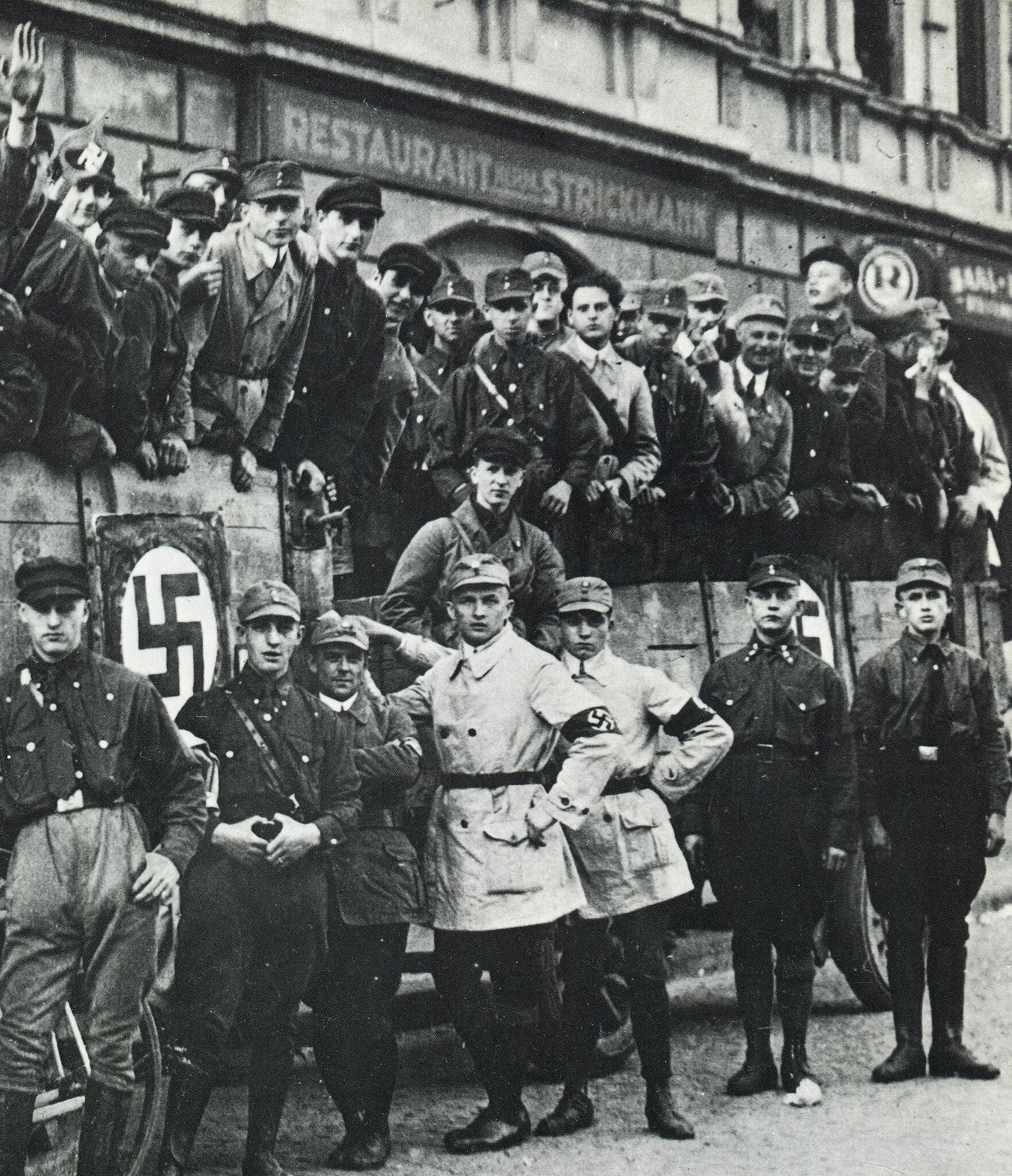
The Semiotics of Terror: Constructing the Nazi Look
“Hitler’s vision of the Aryan superstate was to be expressed as much in art as in politics: culture was not only the end to which power should aspire, but the means of achieving it.”
Frederic Spotts, Hitler and the Power of Aesthetics
Before we indict Boss, let’s look at what he was actually producing.
The Nazi aesthetic didn’t spring fully formed from the mind of a single fashion designer. It was a cobbled-together evolution of military tradition, street-fighting practicality, and surplus goods.
Take the ‘Brownshirt’ (the Sturmabteilung or SA).

The terrifying ocean of brown that flooded German streets in the early 1930s wasn’t chosen for its earthy tone or connection to German soil.
It was chosen because it was cheap.
As historian Frederic Spotts points out in Hitler and the Power of Aesthetics, the brown shirts were originally ‘Lettow-Shirts’—surplus tropical uniforms intended for General Paul von Lettow-Vorbeck’s troops in German East Africa.
When the war ended and the colonies were lost, the warehouses were full of them.
A right-wing Freikorps leader, Gerhard Rossbach, bought the lot at a bargain price.
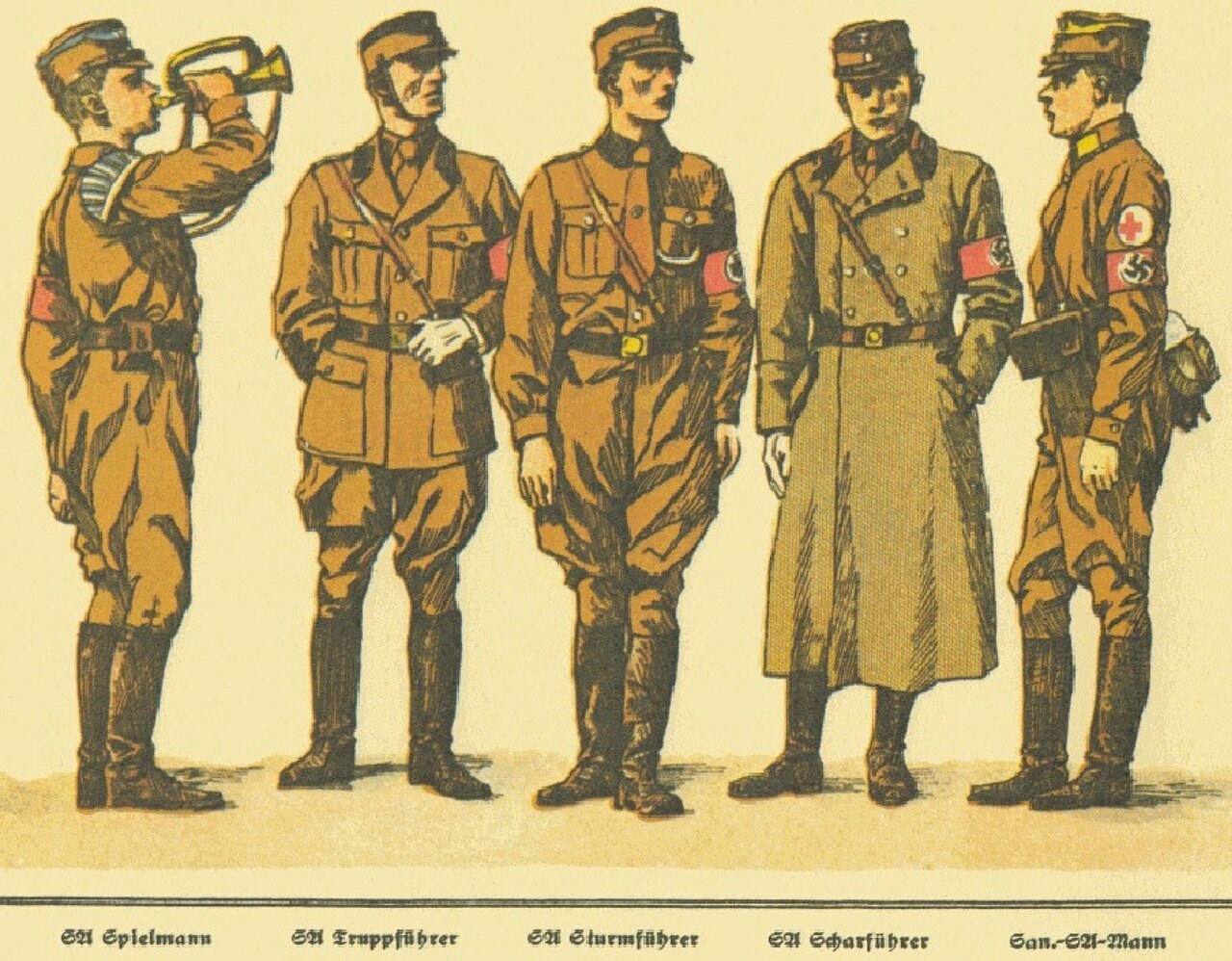
The Nazis, perpetually broke in their early years, adopted them. The iconic ‘Nazi Brown’ was essentially the result of a clearance sale.
But as the party moved from a rag-tag band of street brawlers to the government-in-waiting, the image needed to tighten.
This is where the RZM comes in.

The Reichszeugmeisterei (National Equipment Quartermaster) was established in 1929 as the successor of the Sturmabteiling Zeugmeisterei (equipment depot) formed in Munich one year earlier. This organisation would be tasked with standardising the chaotic visual identity of the party. It acted to define design, manufacturing and quality standards, and published an authoritative colour chart for textiles.
Eventually, in 1933, the ‘Law for the Protection of National Symbols’ was introduced .
You couldn’t just sew a swastika on a pillowcase anymore; everything had to be regulated.
The RZM became the rigorous gatekeeper of the Nazi brand. They issued licenses to manufacturers, dictating the precise shade of thread, the tensile strength of the wool, and the exact dimensions of the collar tabs.
This systemised production destroyed the concept of the ‘individual designer’ in the traditional sense. The look was determined by committee, by tradition, and by the whim of the high command.
So, who actually designed the black SS uniform, if not Hugo Boss?
The credits for that ‘iconic’ evil belong to two men whose names have largely vanished from popular understanding, eclipsed by the Boss label: Professor Karl Diebitsch and Walter Heck.

Diebitsch was an artist and an SS-Oberführer.
Heck was a graphic designer who, significantly, created the SS ‘Siegrune’ symbol (the lightning bolts) for a pitiful fee of 2.50 Reichsmarks.
Around 1932, these men were tasked with separating the SS (Hitler’s elite bodyguard) from the rowdy, uncouth rank-and-file of the SA Brownshirts. They looked back to the elite Prussian cavalry—the Hussars, particulary of the ‘von Ruesch’ regiment —who had worn black uniforms adorned with skulls (Totenkopf) since the days of Frederick the Great.

Diebitsch and Heck conceptualized the all-black look.
They designed the cut, the insignias, and the imposing silhouette.
They created the visual language; Hugo Boss merely followed the pattern.
–

The Man from Metzingen: Hugo Boss' True Role
“It is clear that Hugo F. Boss did not only join the party because it led to contracts for uniform production, but also because he was a follower of National Socialism.”
Roman Köster, Hugo Boss, 1924-1945
So, where does Hugo Boss fit into this grim tableau?
If Diebitsch was the architect, Hugo Boss was the bricklayer.
Roman Köster’s definitive study, Hugo Boss, 1924–1945, commissioned by the company itself in a moment of commendable transparency years later, clarifies the timeline.
In 1924, two years after taking over his parents’ clothing retail business in Metzingen, Hugo Ferdinand Boss opened a factory for the production of workwear along with two partners, Albert and Theodor Bräuchle, as shareholders.
By 1931, the company was broke – with only six sewing machines to its name.
The same year Hugo Boss joined the Nazi Party, received the membership number 508889, and subsequently was awarded his first big orders: brown shirts for the SA.
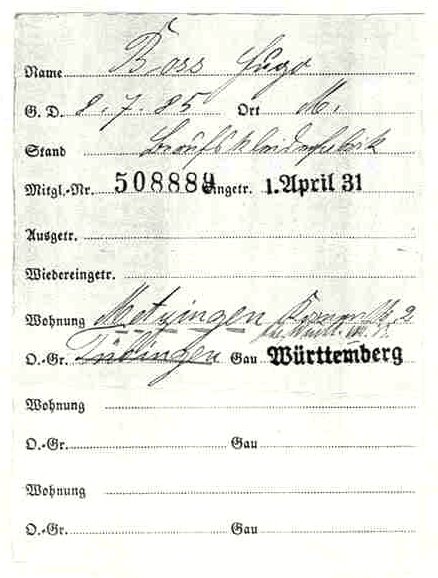
It is possible that Boss had already started producing brown Sturmabteilung uniforms in small batches in 1928 – certainly not in 1924 as the company would boast by the mid-1930s.
Regardless, as the Nazis took power two years after Boss joined the Party, the demand for uniforms skyrocketed.
There were millions of bodies to clothe: the Wehrmacht, the SS, the Postal Service, the Railway Service, the Hitler Youth. No single factory could handle this. The RZM farmed out contracts to thousands of manufacturers across the Reich.
Hugo Boss was one of them.

Boss, however, was not Hitler’s personal tailor.
He wasn’t the ‘Chanel of the Chancellery’ as has been suggested elsewhere.
He ran a medium-sized provincial factory that happened to be very good at cutting wool to the RZM’s rigorous specifications.
His firm produced uniforms for the SA, the SS, the Wehrmacht, and the Hitler Youth.
However, simply calling him ‘just another manufacturer’ risks minimizing his enthusiasm. Boss was a ‘convincing’ Nazi.
He displayed a framed photograph of himself with Hitler (taken at the Obersalzberg) in his apartment.
He thrived on the new order.
By 1940, the company’s turnover had skyrocketed from a paltry few hundred thousand Reichsmarks to 3,300,000 RM.
But as the war ground on and German men were sent to the front, labor shortages became critical. Here lies the darkest chapter of the Boss history—one that goes beyond mere aesthetics.

To keep the sewing machines humming and the profits flowing, Hugo Boss employed forced labor. Approximately 140 forced laborers (mostly women from Poland) and 40 French prisoners of war were housed in a camp near the factory.
Conditions were brutal, though perhaps less lethal than the concentration camps. These women, snatched from their homes in the East, were living in a ramshackle wooden barrack, underfed and overworked, stitching the uniforms for the men who were occupying their homeland.
Josefa Gisterek, a Polish worker, fled the brutality of the foreman in 1941. She was captured by the Gestapo, returned to the factory to serve as a warning to others, and eventually committed suicide. Boss paid for the funeral, a strange, macabre footnote of decency in an indecent arrangement.
This is the reality of Hugo Boss in the 1940s.
He wasn’t sketching elegant collars for Himmler in a Berlin studio.
He was in Metzingen, managing a factory floor run on the misery of slave labor, churning out standardised field-grey tunics to meet a government quota.
–
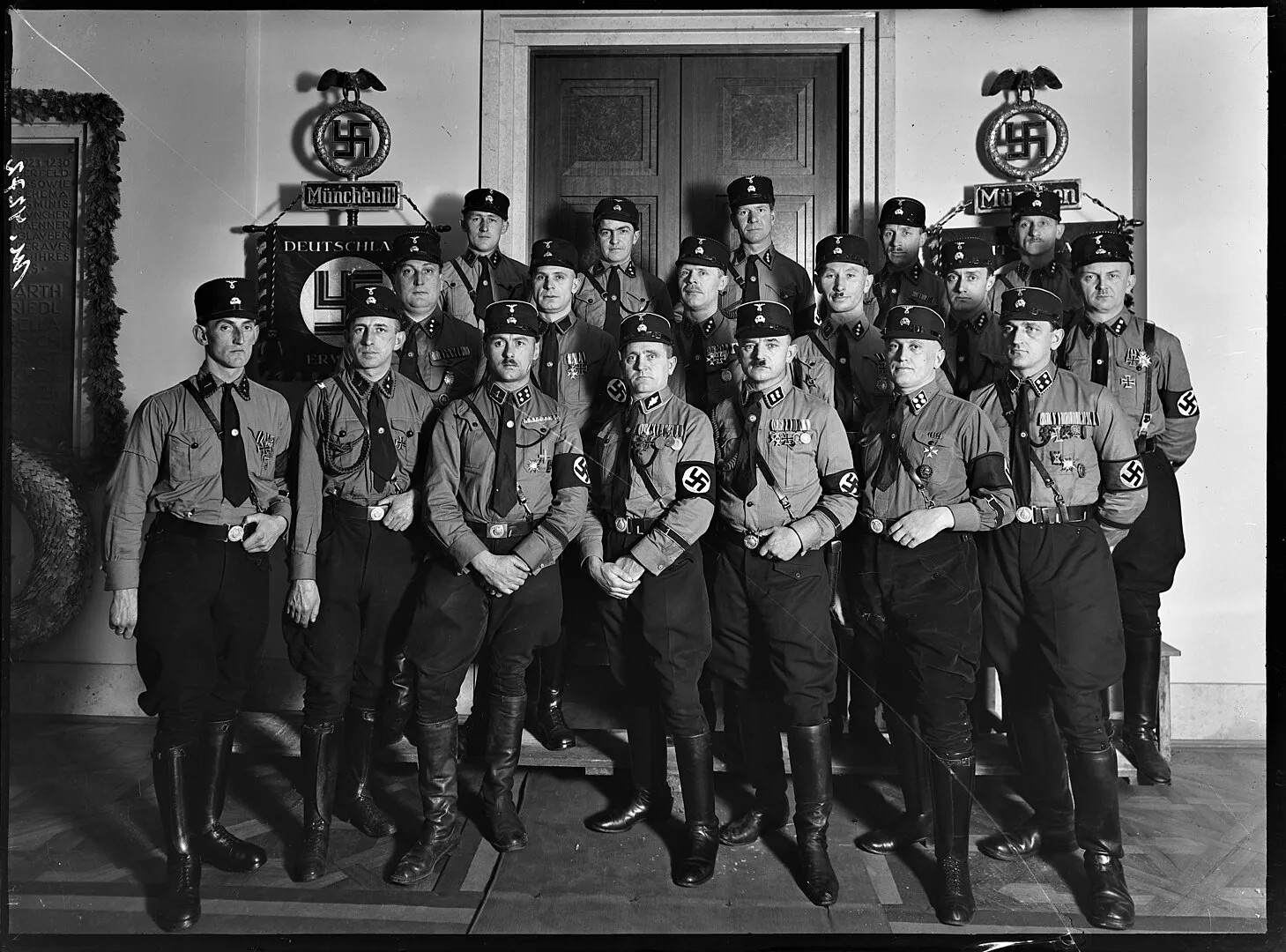
Conclusion
“[Hugo Boss] wishes to express its profound regret to those who suffered harm or hardship at the factory run by Hugo Ferdinand Boss under National Socialist rule.”
Hugo Boss AG, official company statement, (2011)
Hugo Boss was a manufacturer, a tailor, and a party member who utilised the Nazi economic boom to save his business. He stitched the clothes; he did not create the image. The architects of the “Black Corps” look were Karl Diebitsch and Walter Heck.
To say Boss designed the uniforms gives him too much credit for the creative vision and distracts from the reality of his complicity.
The truth is more prosaic and arguably more insidious: Hugo Boss was a cog in the machine. He was a man who looked at a movement preaching hate and violence and saw, primarily, a lucrative contract for fabric and thread.
He didn’t invent the devil’s clothes; he just ensured they fit well, using the hands of slaves to do it.
***
If you’ve enjoyed reading this article, consider booking one of our private guided tours of Berlin.
Bibliography
Browning, Christopher (1992), Ordinary Men: Reserve Police Battalion 101 and the Final Solution in Poland, HarperCollins, ISBN N/A.
Evans, Richard J. (2005), The Third Reich in Power, Penguin Books, ISBN N/A.
Evans, Richard J. (2008), The Third Reich at War, Penguin Books, ISBN N/A.
Kershaw, Ian (2001), The Hitler Myth: Image and Reality in the Third Reich, Oxford University Press, ISBN N/A.
Kershaw, Ian (2010), Hitler: A Biography, W. W. Norton & Company, ISBN N/A.
Köster, Roman (2011), Hugo Boss, 1924–1945: Eine Kleiderfabrik zwischen Weimarer Republik und Drittem Reich, C.H. Beck, ISBN N/A.
Longerich, Peter (2012), The SS: A New History, Oxford University Press, ISBN N/A.
Shirer, William L. (1960), The Rise and Fall of the Third Reich, Simon & Schuster, ISBN N/A.
Snyder, Louis (1984), Hitler’s Elite: The SS 1933–1945, Hippocrene Books, ISBN N/A.
Speer, Albert (1970), Inside the Third Reich, Macmillan, ISBN N/A.
Taylor, Brandon (1992), The Art of the Third Reich, Routledge, ISBN N/A.
Tooze, Adam (2006), The Wages of Destruction: The Making and Breaking of the Nazi Economy, Allen Lane, ISBN N/A.
HISTORICAL ARTICLES
Mythbusting Berlin
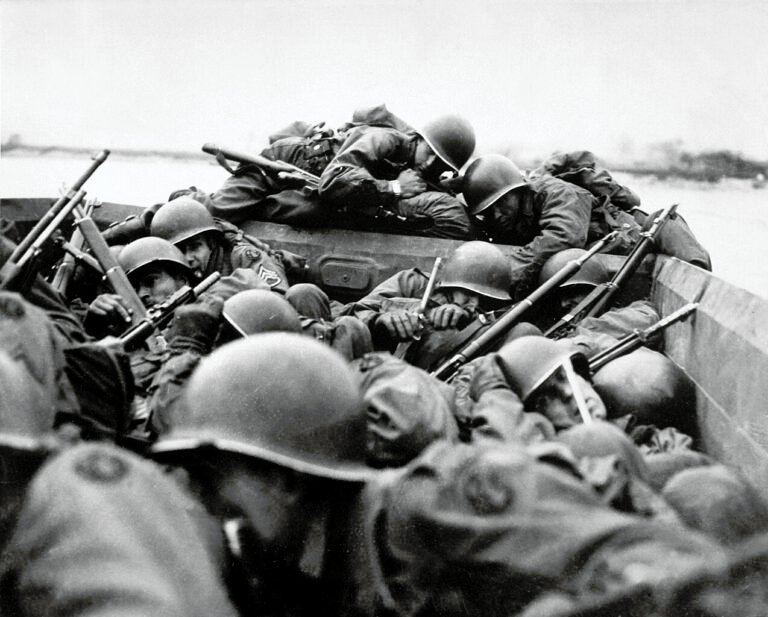
Could The Western Allies Have Captured Berlin? – Mythbusting Berlin
To contemplate a Western Allied capture of Berlin in 1945 is to challenge the established endgame of the Second World War. What was the true military and logistical feasibility of a Western Allied assault on the Nazi capital? What factors truly sealed Berlin’s fate, and what might have changed had the Allies pushed eastward?
Answering these questions means delving into the complex interplay of logistics, political maneuvering, and the competing visions for a post-war world
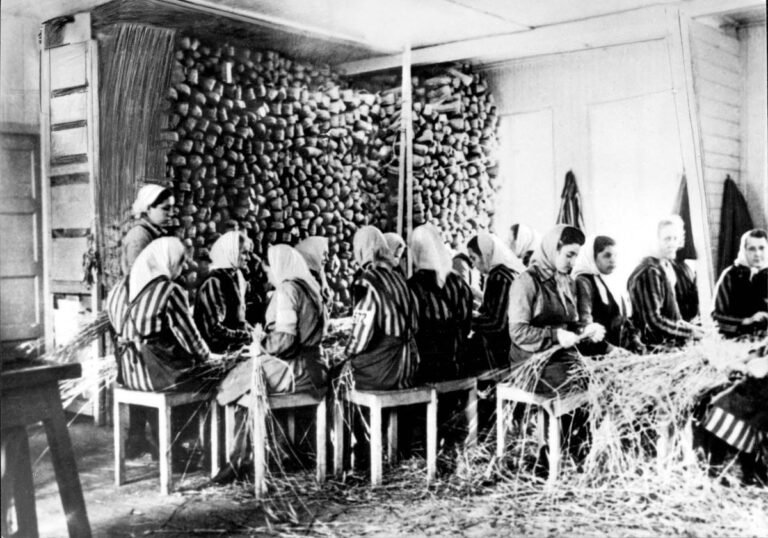
Did Any Of The Rothschild Dynasty Die In The Holocaust? – Mythbusting Berlin
The Rothschild name is synonymous with immense wealth, influence, and persistent conspiracy theories—especially during the era of Nazi Germany. Often targeted by antisemitic propaganda, the family’s survival during World War II has sparked myths about their supposed immunity from Nazi persecution. But did any Rothschild family member actually perish in the Holocaust? This article explores that compelling question, unraveling historical misconceptions and revealing the reality behind one of Europe’s most famous dynasties.
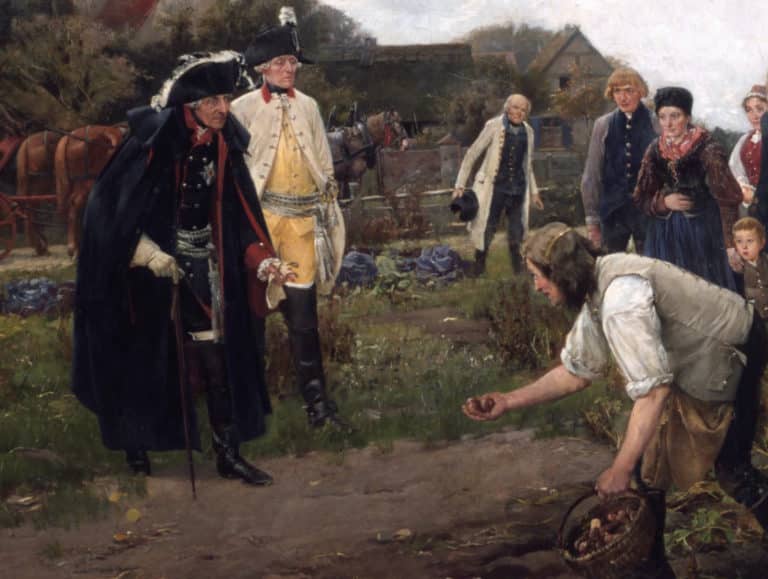
Did Frederick The Great Introduce The Potato To Germany? – Mythbusting Berlin
One of the more bizarre claims to fame attributed to the first King of Prussia is that the man who would go down in history known as Frederick the Great introduced the potato to Germany during his reign back in the 1700s. This starchy root vegetable has undoubtedly become a staple part of German cuisine – an essential addition to any plate of Schnitzel, Schweinshaxn, and Königsberger Klopse – however, whether Frederick the Great is
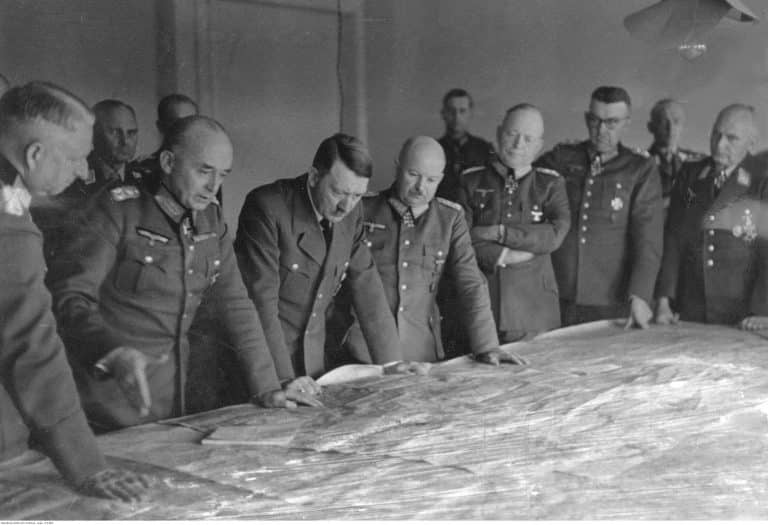
Did Hitler Escape To Argentina In 1945? – Mythbusting Berlin
Although Nazi leader, Adolf Hitler, certainly remains an inescapable figure, could there be any truth to the story of his escape to Argentina in 1945? That the most wanted man on earth could simply vanish, to spend the rest of his life peacefully in South American obscurity captivates imaginations. Yet, despite numerous investigations, this tale persists primarily as myth—fueled by speculation, hearsay, and conspiracy theories.
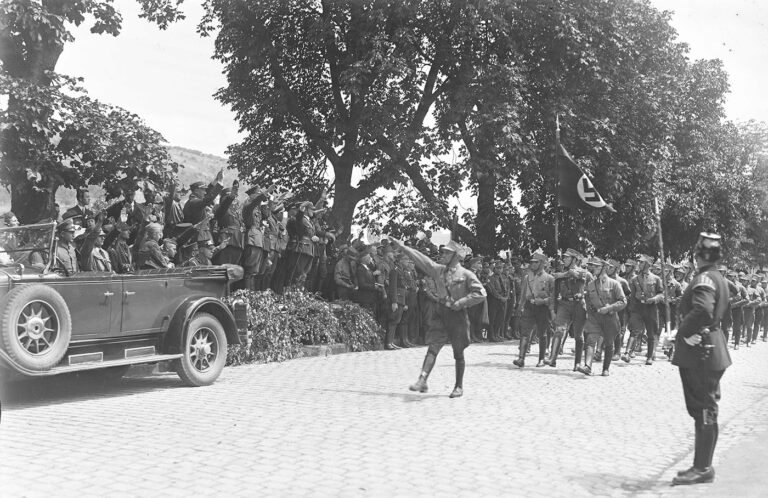
Did Hugo Boss Design The Nazi Uniforms? – Mythbusting Berlin
The idea that Hugo Boss – the man whose name now adorns expensive suits and fragrances – was the creative genius behind the Nazi uniforms suggests a terrifying collision of haute couture and holocaust – a marriage of high style and high crimes. The image is striking: a German tailor sketching the ultimate villain’s costume. But history, as usual, is far messier, more bureaucratic, and more banal than the internet memes suggest. To understand who
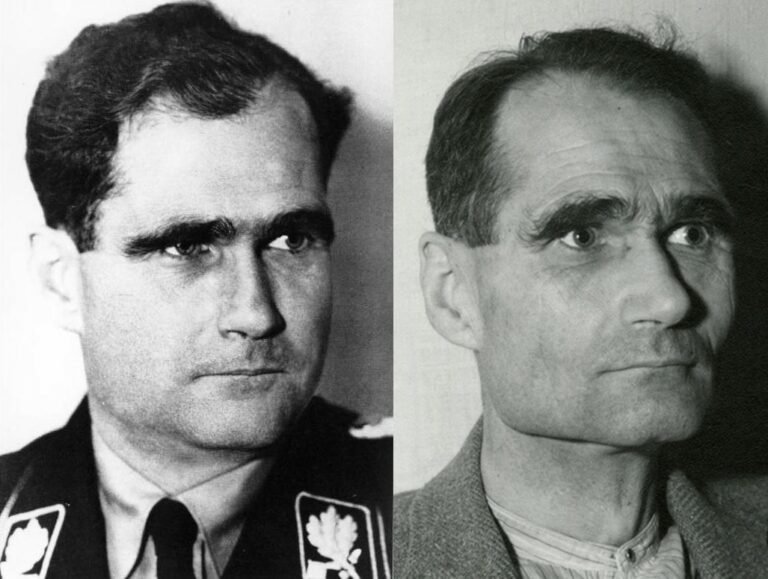
Did Rudolf Hess Really Commit Suicide? – Mythbusting Berlin
On a summer’s day in 1987, the last Nazi war criminal of the Nuremberg trials was found dead in a prison built for hundreds, yet for two decades, housed only him. The official verdict was suicide, a straightforward end to a life defined by fanaticism, delusion, and contradiction.
But the simplicity of the report belied the complexity of the man and the 46 years he had spent in Allied custody. In the meticulously controlled
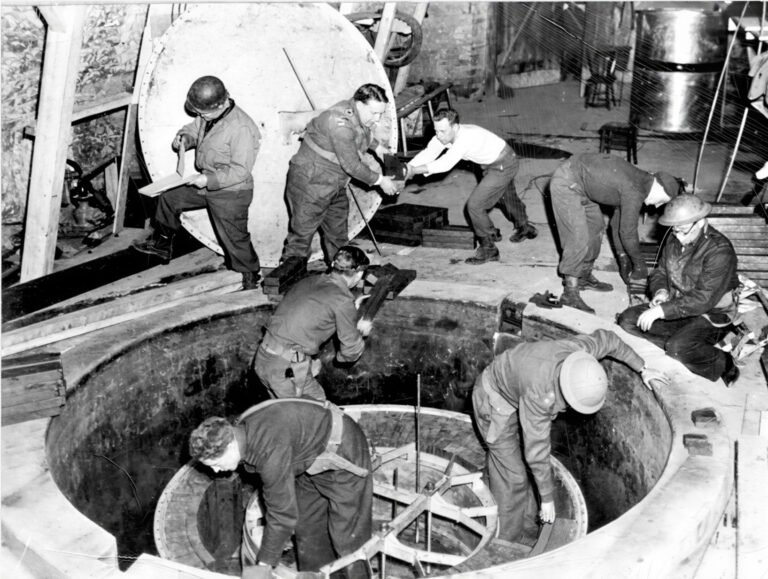
Did The Nazis Develop Nuclear Weapons? – Mythbusting Berlin
The Nazi obsession with super-weapons became so serious in the closing stages of the Second World that Adolf Hitler personally believed that such ‘Wunderwaffen’ both existed in a usable form – and would save the country from defeat. Had the Nazis managed to develop nuclear weapons by 1945 – the outcome of the war would surely have been different. But how close were Hitler, Himmler, and his henchmen to developing an A-bomb?

Did The Nazis Invent Decaf Coffee? – Mythbusting Berlin
Persistent rumors claim that Nazis preferred their coffee anything but pure, leading some to wonder if they might have influenced the development of decaffeinated coffee. Although decaf was already widely available across Europe by the mid-20th century, speculation continues: could the Nazis really have played a role in popularizing—or even discovering—this caffeine-free alternative, or is this simply another caffeinated conspiracy cooked up to sensationalize an ordinary historical detail?

Did The Nazis Invent The Bicycle Reflector? – Mythbusting Berlin
The fruits of wartime ingenuity are plenty – so many, in-fact, that it has become somewhat of a worn cliche that as the guns start firing the innovators get to work, often solving problems while providing more problems for the enemy to overcome.The kind of progress that results in the production of newer improved, more lethal weapons, such as to increase the chances of victory.
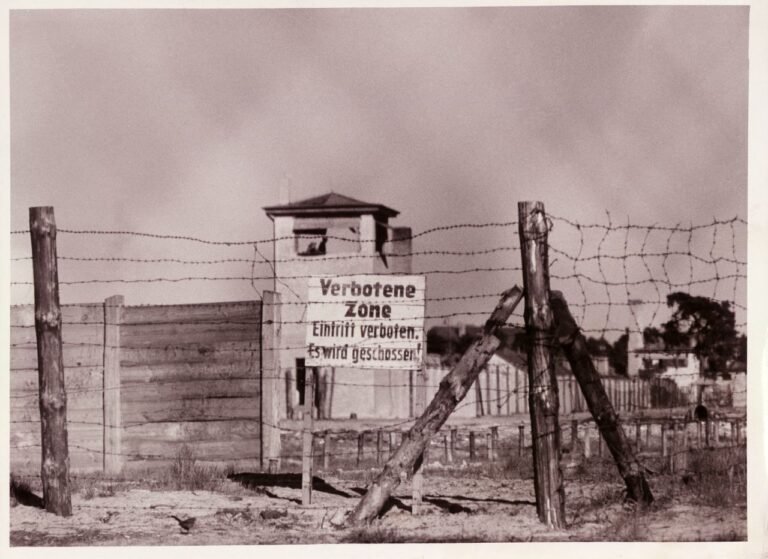
Did The Nazis Run The Largest Counterfeiting Operation In History – Mythbusting Berlin
During the Second World War the Nazis masterminded an astonishing plot to destabilise Britain by flooding its economy with counterfeit banknotes. Crafted in secret by concentration camp prisoners, this forged fortune became the most ambitious counterfeiting operation ever attempted. But was it history’s largest? Dive into the extraordinary tale of Operation Bernhard,
rife with deception, survival, and intrigue—revealing the truth behind one of the Third Reich’s most audacious schemes and its surprising legacy.
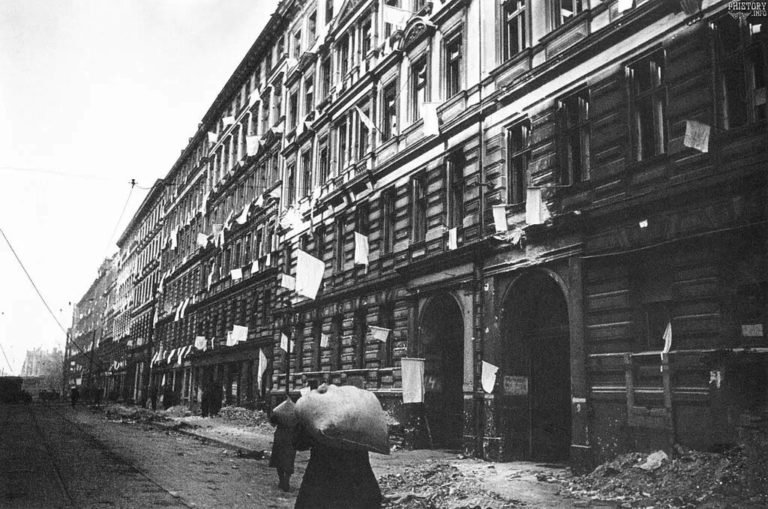
Did The Second World War End In Berlin? – Mythbusting Berlin
When is a war ever truly over? When the last shot is fired in anger would seem like the best measure. Rarely, though, is it possible to gain insight into such a moment.
Remarkably, a record still exists of such a moment at the end of the First World War on the Western Front. A seismic register and recording of the last belching battery of British guns firing artillery across no-man’s-land, followed by a profound
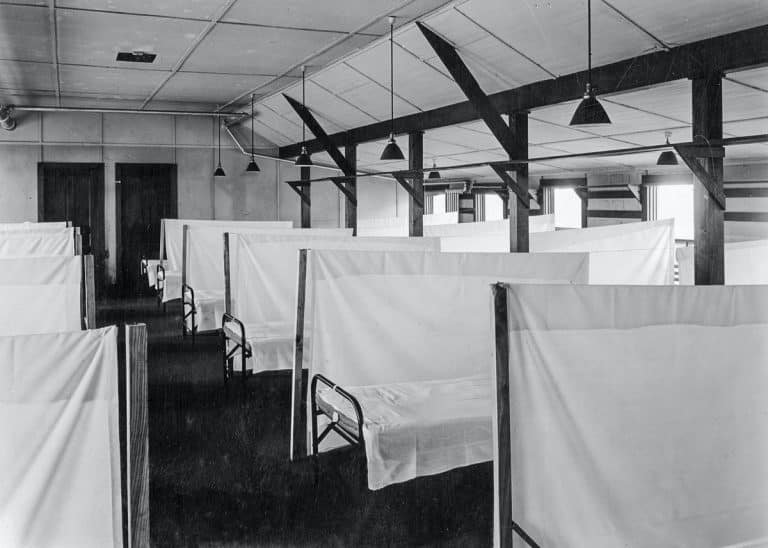
Did The Spanish Flu Pandemic Help The Nazis Take Power? – Mythbusting Berlin
The devastating Spanish Flu pandemic of 1918-1919 struck amid Germany’s post-war turmoil, compounding social instability, economic hardship, and widespread political disillusionment. Could this catastrophic health crisis have indirectly paved the way for Nazi ascension? While often overshadowed by war and revolution, the pandemic’s profound psychological and societal impacts arguably contributed to the perfect storm, enabling extremist ideologies—including Nazism—to gain popularity and ultimately seize power in a fractured Germany.

How Many Assassination Attempts On Adolf Hitler Were There? – Mythbusting Berlin
Nazi leader, Adolf Hitler, projected an aura of invincibility, a man of destiny shielded by providence. But behind the carefully constructed image of the untouchable Führer lies a story of constant threat, of bombs that failed to detonate, and errant bullets that missed their mark. Unearth the hidden history of the numerous attempts on Hitler’s life as we explore the courage of those who tried to change the course of history and the devil’s luck
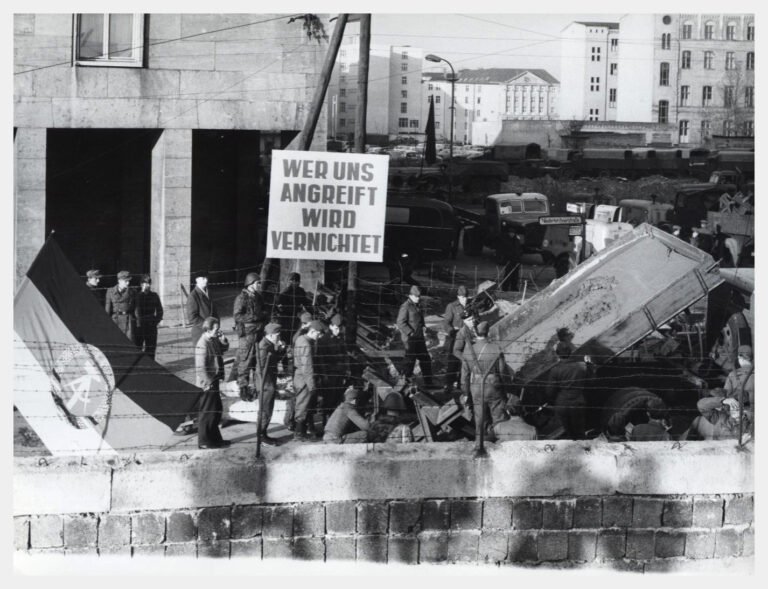
How Many People Died Trying To Escape East Germany? – Mythbusting Berlin
The image of the Berlin Wall is seared into our collective memory, a concrete symbol of Cold War oppression. We think of the daring escapes and the tragic deaths of those who failed. But that well-known number is only a fraction of the truth. The story of those who died trying to escape East Germany is far broader and more complex than most imagine, stretching along a thousand-kilometer border and out into the cold waters
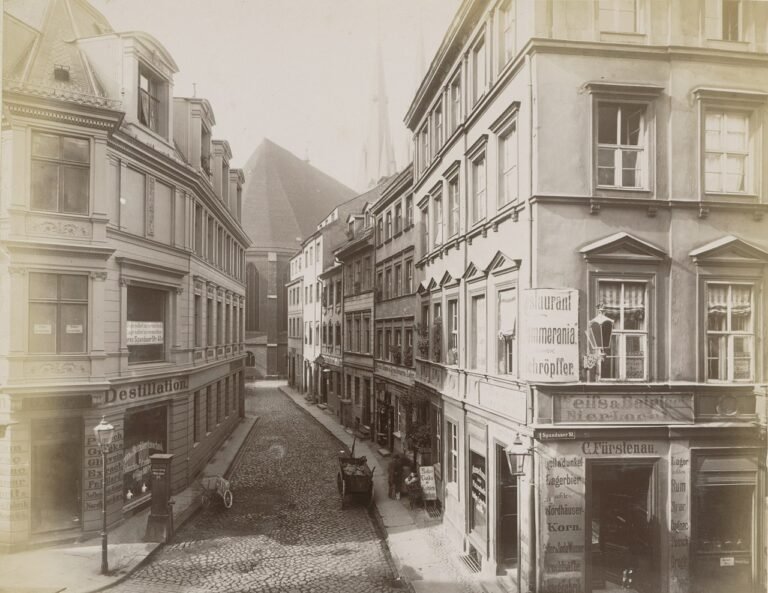
How Old Is Berlin? – Mythbusting Berlin
A relatively new arrival in Europe, Berlin is over 1000 years younger than London, nevermind Rome or Athens, Jerusalem or Jericho. Just how old is Berlin though?
A question fraught with false assumptions and distortions – that has more often than not been answered with propaganda as it has with the cold hard truth.
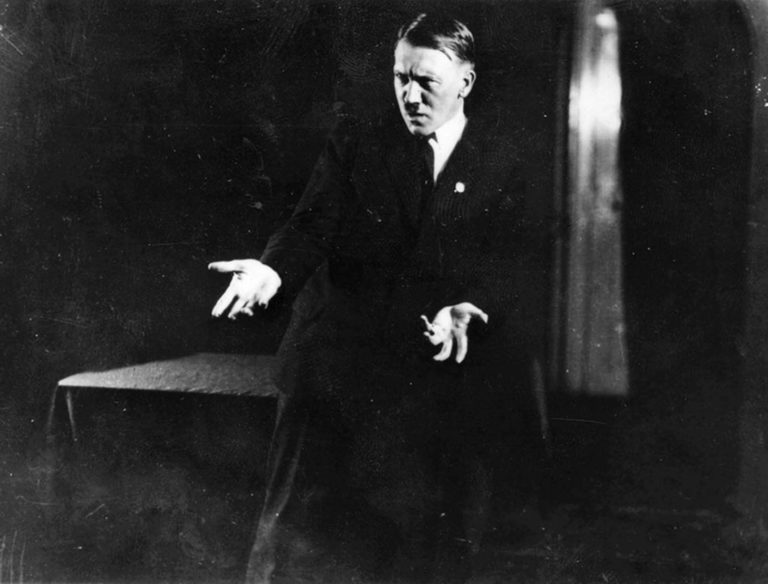
Was Adolf Hitler A Drug Addict? – Mythbusting Berlin
Solving the enigma of the ‘Führer’ has become a preoccupation for many, since the arrival of the Austrian-German onto the world stage – although moving beyond the mythology without falling into the trap of prejudically extrapolating on the psychopathography of Hitler or demonising so as to excuse his actions has proven problematic. What to make of the man who became more than the sum of his masks? The painter; the military dilettante, the mass murderer,

Was Adolf Hitler Gay? – Mythbusting Berlin
In the shadowy corridors of Third Reich history, few questions provoke as much tabloid curiosity and scholarly exasperation as the sexuality of Adolf Hitler. For decades, rumors have swirled—whispered by political enemies in 1930s Munich, psychoanalyzed by American spies in the 1940s, and sensationalized by revisionist authors today. Was the dictator who condemned thousands of men to concentration camps for “deviant” behavior hiding a secret of his own? By peeling back the layers of propaganda,
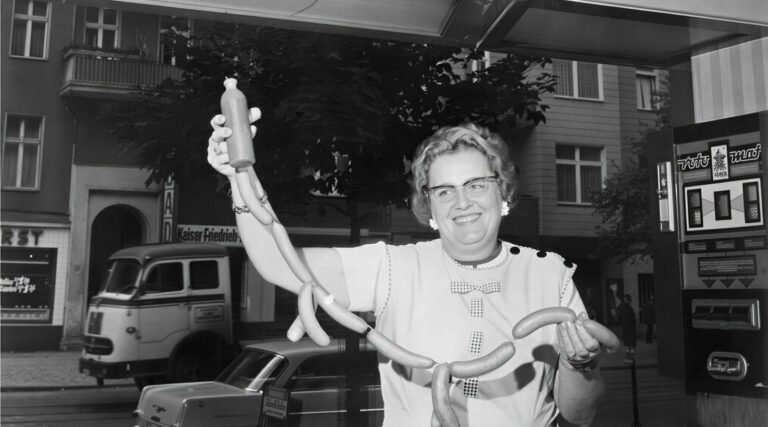
Was Currywurst Invented In Berlin? – Mythbusting Berlin
Explore the story behind what many consider Berlin’s most iconic snack—the ever-so-humble Currywurst. Often hailed as an enduring symbol of culinary creativity amid Cold War scarcity, this humble dish has inspired fierce debate about its true origin. But was it genuinely invented here in Berlin, or have proud locals simply adopted and elevated this spicy street-food favorite into legendary status all their own?

Was Fanta Invented By The Nazis? – Mythbusting Berlin
As one of the most secretive organisations in the world, the Coca Cola corporation refuses to share its secret recipe with anyone. Famously insisting only on shipping the base syrup of its drinks to plants around the world to be carbonated and distributed.
This combined with the trade limitations of the Second World War may have led to the introduction of one of the most popular soft-drinks in the world. But could it be true:
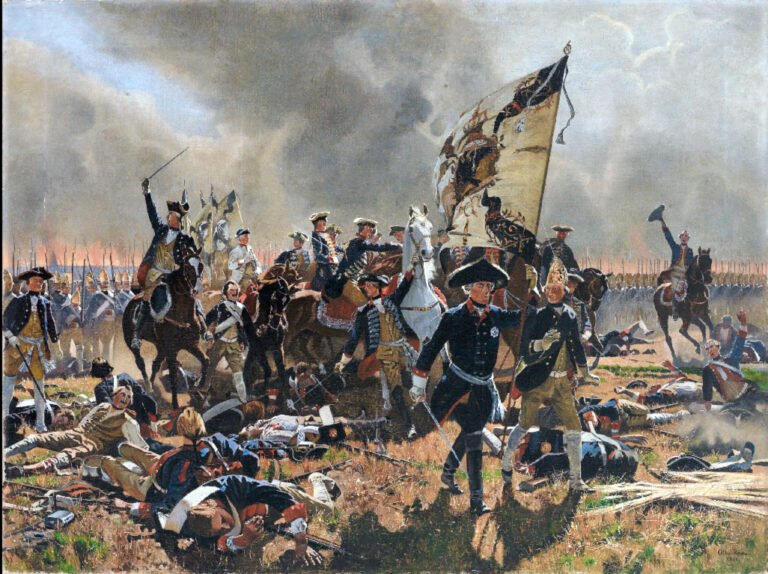
Was Frederick The Great Gay? – Mythbusting Berlin
Frederick II of Prussia, better known as Frederick the Great, is often remembered as the archetypal enlightened monarch – a brilliant military commander, patron of the arts, and learned philosopher. Yet behind the stern portraits of this 18th-century warrior-king lies a personal life long shrouded in intrigue and speculation. Intrigue around the king’s sexual orientation has persisted through the centuries, chiefly revolving around one question: Was Frederick the Great gay?



